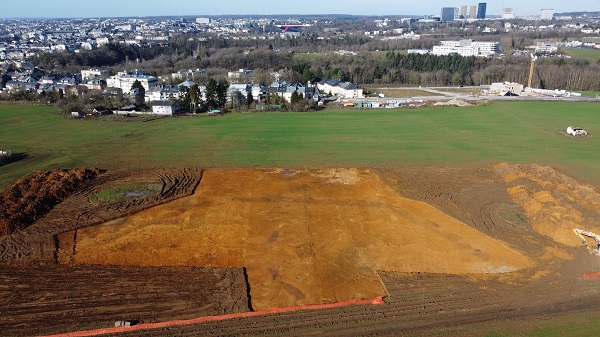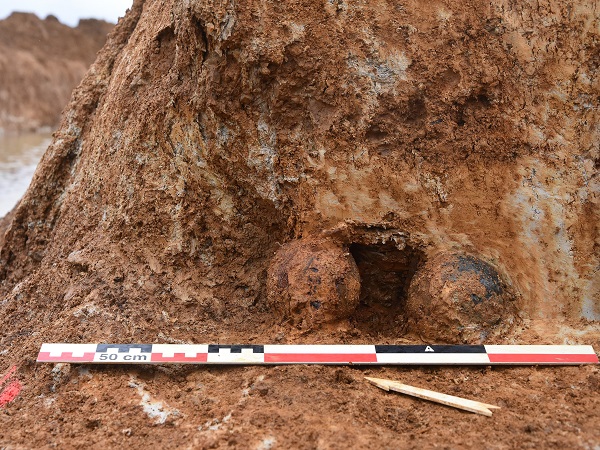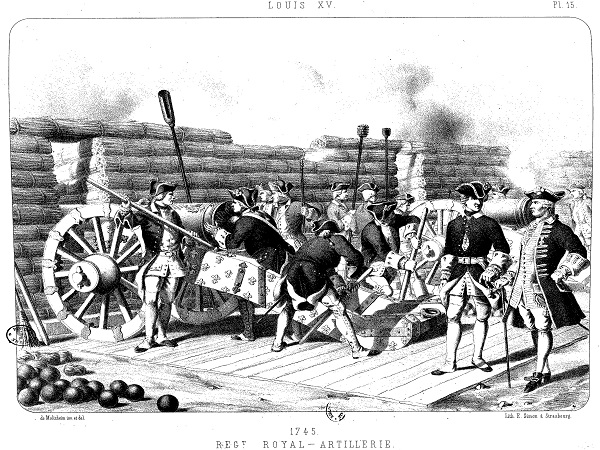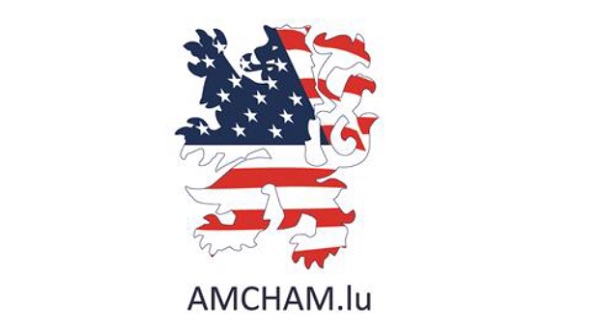 View of the ditch of the French artillery battery with Luxembourg City and the Grand Duchess Charlotte Bridge in the background;
Credit: © Archeo Diag & INRA
View of the ditch of the French artillery battery with Luxembourg City and the Grand Duchess Charlotte Bridge in the background;
Credit: © Archeo Diag & INRA
Chronicle.lu has teamed up with Luxembourg's National Institute for Archaeological Research (Institut national de recherches archéologiques - INRA) for a series of articles on archaeological digs and discoveries around the Grand Duchy.
The series explores digs spanning from prehistoric to Roman and medieval times, highlighting key finds and what they reveal about Luxembourg’s past. It also sheds light on the work of the INRA and its approach to archaeological and historical research.
The latest article in this series looks at a French artillery battery from 1795, unearthed in Luxembourg-Bonnevoie in 2023.
This French artillery battery, dating to the 1794-1795 blockade of the Luxembourg fortress during the War of the First Coalition - fought between the armies of the First French Republic and the Austrian garrison of the Holy Roman Empire - was excavated in early 2023 by archaeologist Yann Waersegers (Archeo Diag Sàrl) and his team, under the supervision of the INRA. This particular type of earthen fortification appears to represent a unique and previously undocumented form of military installation in Europe from this period.
An aerial photograph taken in 2017 revealed two key structures: a trapezoidal ditch, interpreted as the site of an artillery battery from the 1794-95 blockade, and a section of the circumvallation ditch from the 1684 siege by Louis XIV’s army. Geophysical surveying and other diagnostic methods later confirmed the presence of these earthworks.
Several historical sources also precisely locate an artillery battery on the Bonnevoie plateau. These include two blockade plans held at the Österreichische Nationalbibliothek in Vienna and French military correspondence, including letters from General Hatry, commander of the besieging forces, who accepted the fortress’ surrender on 7 June 1795. This battery, the last to be constructed, occupied an advanced position relative to the others, likely to allow for additional mortars aimed at accelerating the city’s fall.
The surviving elements of the battery include a filled-in extraction ditch, originally excavated during the dismantling of the earthen parapet. Construction commenced in late May 1795, ultimately occupying a trapezoidal surface of approximately 2,100 m2. The battery's front, oriented toward the city, extends roughly 45 metres in length, with each flank measuring around 30 metres.
Archaeological investigation of the ditch revealed clear evidence of Austrian counter-battery fire, with numerous impact marks preserved in situ. Several nearby forts are potential sources of this fire. A substantial quantity of Austrian projectiles was recovered, primarily from the ditch infill. These included 214 cannonballs (203 intact), representing three distinct calibres, along with 62 fragments of mortar bombs found within and around the battery perimeter. This material attests to the intensity of artillery exchanges between French Republican and Austrian forces. Based on diameter, the cannonballs have been classified as calibre 6 (light), calibre 12 (medium) and calibre 18 (heavy).
The recovery of a French uniform button from the ditch conclusively links this structure to the French troops of the First Republic. Additional finds include shovel irons, fragments of leather footwear, spherical lead bullets, ceramics and what appears to be a probable component of a parapet construction - a small oak stake.
Numerous artillery manuals address battery-building techniques and methods. For the period in question - the late 18th century - researchers have relied on the writings of artillery officer Théodore Bernard Simon Durtubie (1741-1807) and his Manuel de l’artilleur. Chapter Two of the manual provides a comprehensive outline of the successive stages involved in battery construction. Drawing on both field data and historical sources, it has been possible to develop a plausible reconstruction of the battery’s frontal profile.

Impact containing two cannonballs; Credit: © Archeo Diag & INRA

Restitution of the interior of a battery where the cannons, placed on a platform, fires through an embrasure in the parapet; Credit: Moltzheim 1868, pl. 15








